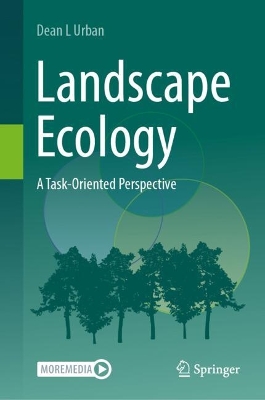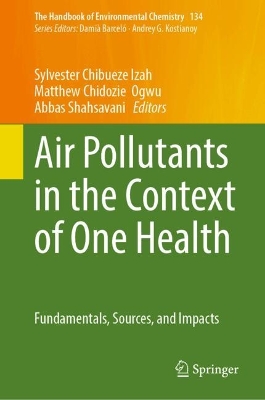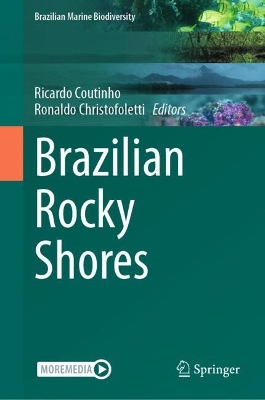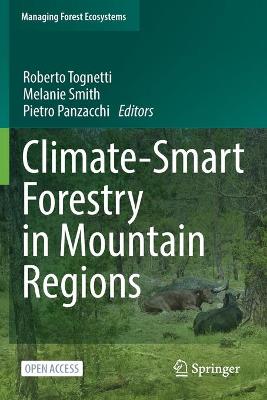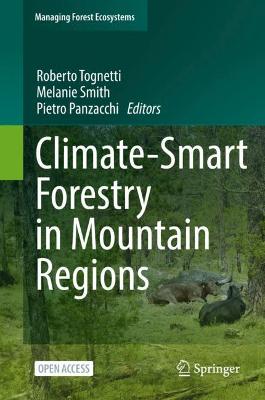Agents and Implications of Landscape Pattern
 portes grátis
portes grátis
Agents and Implications of Landscape Pattern
Working Models for Landscape Ecology
Urban, Dean L
Springer International Publishing AG
10/2024
327
Mole
9783031402562
15 a 20 dias
Descrição não disponível.
The Physical Template of Landscapes .- 1.1. Introduction .- 1.2. Gradient Analysis .- 1.2.1. Gradient Complexes .- 1.3. The Water Balance .- 1.3.1. A Simple Model: PET = AET + Deficit .- 1.4. Estimating Elements of the Template .- 1.4.1. Temperature .- 1.4.2. Radiation .- 1.4.3. Precipitation .- 1.4.4. Soils .- 1.5. Case Study: the Sierra Nevada .- 1.5.1. The Physical Template of the Sierra Nevada .- 1.6. Summary and Conclusions .- References .- Biotic Processes as Agents of Pattern .- 2.1. Introduction .- 2.2. The "Pattern and Process" Paradigm .- 2.3. Coupling of Demographic Processes .- 2.4. Interaction with the Physical Template .- 2.4.1. Coupling Demography and the Physical Template .- 2.4.2. Competition along Environmental Gradients .- 2.4.3. Illustration: Gradient Response in the Sierra Nevada .- 2.4.4. The Unit Pattern Revisited .- 2.5. Dispersal as an Agent of Pattern .- 2.6. Animals, Pests, and Pathogens .- 2.6.1. Animals, Pests and Pathogens as Subtle Agents .- 2.6.2. Animals as Dramatic Agents .- 2.7. Summary and Conclusions .- References .- Disturbances and Disturbance Regimes .- 3.1. Introduction .- 3.1.1 Context and Definitions .- 3.2. Perspectives and Lessons .- 3.2.1. Are Disturbances "Part of the System"? .- 3.2.2. Interactions, Synergies, and Indirect Effects .- 3.2.3. Disturbances and Positive Feedbacks .- 3.2.4. Overlapping Disturbances and Legacies .- 3.2.5. Heterogeneity in Disturbance and Response .- 3.3. Disaggregating Disturbance toward Generality. 3.3.1 A Not-too-General Model.- 3.3.2. The Fire Regime in the Sierra Nevada .- 3.4. Characteristic Dynamics .- 3.5. Humans and Disturbance Regimes .- 3.5.1. Human Impacts on Natural Disturbances - 3.5.2. Novel Disturbance Regimes .- 3.5.3 Human Perception and Landscape Change .- 3.6.Agents of Pattern: Reprise .- 3.7. Summary and Conclusions .- References 78.- 4. Scale and Scaling - 4.1. Introduction.- 4.2. The Importance of Scale in Ecology.- 4.2.1. Observational Scale as a Filter on Nature.- 4.2.2. Characteristic Scaling.- 4.2.3. Sampling Grain and Extent, and Statistical Behavior .- 4.3. Scaling Techniques .- 4.3.1. Scaling Techniques for Geostatistical Data.- 4.3.2. Illustration: Scaling of the Sierran Physical Template.- 4.4. Tactical Scaling.- 4.4.1. Tactical Targeting of Sampling Scale(s) .- 4.4.2. Avoid or Embrace Space? .- 4.5. Summary and Conclusions .- References .- 5. Inferences on Landscape Pattern.- 5.1. Introduction.- 5.2. Patchiness and Patches .- 5.2.1. Patch Definition .- 5.3. Landscape Pattern Metrics .- 5.3.1. Levels of Analysis .- 5.3.2. Components of Pattern .- 5.3.2 Correlation and Redundancy .- 5.3.4. Alternative Framings for Landscape Pattern .- 5.4. Interpreting Landscape Metrics .- 5.4.1. Neutral Models and Neutral Landscapes .- 5.4.2. Neutral Templates for Landscape Processes .- 5.4.3. Extending Neutral Models: Agents of Pattern.- 5.5. Explanatory Models and Inferences .- 5.5.1. Approaches to Inferences on Pattern.- 5.5.2. Illustrations .- 5.5. Explanatory Models and Inferences .-
.- 5.5.1. Approaches to Inferences on Pattern .- 5.5.2. Illustrations .- 5.5.3. Inferences on Pattern: Area versus Configuration.- 5.5.4 Inferences on Pattern: the State-of-the-Art.- 5.6. Summary and Conclusions. References .- Implications of Pattern: Metapopulations .- 6.1. Introduction.- 6.2. Metapopulations in Theory .- 6.2.1. The Levins Model.- 6.2.2. The Spreading-of-Risk Model .- 6.2.3. The Source-Sink Model.- 6.2.4. The Incidence Function Model .- 6.2.5. Commonalities among Metapopulation Models.- 6.2.6. Characteristic Behaviors of (Model) Metapopulations .- 6.3. Metapopulations in Practice .- 6.3.1. Are there Real Metapopulations in Nature? .- 6.3.2. Macroscopic Approaches to Metapopulations .- 6.4. Network Models of Metapopulations .- 6.4.1. Graphs and Metapopulations .- 6.5. Metapopulations and Connectivity Conservation .- 6.5.1. Structural and Functional Connectivity .- 6.5.2. Metapopulations and Landscape Genetics .- 6.6. A Model Template for Applications .- 6.7. Summary and Conclusions .- References .- Supplement 6.1. Details on the Metapopulation Models .- S6.1.1. The Levins Model .- S6.1.2. The Spreading-of-Risk Model .- S6.2.3. The Source-Sink Model .- S6.2.4. The Incidence Function Model .- S6.2.5. Notes on the Individual-based Simulators Metapop1 .- Communities and Patterns of Biodiversity .- 7.1. Introduction .- 7.2. Island Biogeography and Landscapes.- 7.2.1. Area and Isolation Effects .- 7.2.2. Island Biogeographic Theory and the SLOSS Debate .- 7.2.3. A Diversity of Diversities .- 7.3. Perspectives on Metacommunities .- 7.3.1. A General Framing .- 7.3.2. Inferences and Limits to Inference .- 7.4. Approaches and Lines of Evidence .- 7.4.1. The Incidence Matrix and Community Assembly .- 7.4.2. Metacommunity Models: Variations on a Theme .- 7.4.3. Species Distribution Models .- 7.4.4. Multvariate Approaches to Partitioning Beta-diversity .- 7.4.5. Lines of Evidence and Complementary Analyses .- 7.5. Illustration: Sierran Forests .- 7.5.1. The Perspective of Ordination and Gradient Analysis .- 7.5.2. Partitioning Beta-diversity .- 7.6. Managing Metacommunities .- 7.7. Summary and Conclusions .- References.- Supplement 7.1. Disciplinary Approaches (Details) .- S7.1.1. Incidence Matrices and Community Assembly.- S7.1.2. Metacommunity Models: Variations .- S7.1.3. Species Distribution Models .- S7.1.4. Ordination Techniques .- IImplications of Pattern for Ecosystems .- 8.1. Introduction .- 8.2. Spatial Heterogeneity and Ecosystems .- 8.2.1. Spatial Heterogeneity in the Physical Template .- 8.2.2. Lateral Fluxes on Landscapes .- 8.2.3. Landform and Landscape Processes .- 8.2.4. Ecosystem Processes and Positive Feedbacks .- 8.2.5. Ecosystems are both Fast and Slow .- 8.3. Ecosystems and Landscape Legacies .- 8.4. Patch Juxtaposition and Edge Effects .- 8.4.1. Edge Effects, Revisited .- 8.4.2. Edges and Ecosystem Processes: Forest Carbon .- 8.5. Ecosystems and Meta-ecosystems .- 8.5.1. Couplings between Systems .- 8.5.2. Meta-ecosystems, Revisited .- 8.5.3. Implications of Meta-ecosystem Structure .- 8.6. Summary and Conclusions .- References .- Urban Landscapes .- 9.1. Introduction .- 9.2. Social-Environmental Systems .- 9.2.1. Approaches to Studying Cities .- 9.3. Agents and Implications of Pattern .- 9.3.1. Agents of Pattern .- 9.3.2. Scale and Pattern .- 9.3.3. Implications of Pattern .- 9.3.4. Revisiting the Agents-and-Implications Framing .- 9.4. Urban Landscapes as Laboratories .- 9.4.1. The Urban Stream Syndrome .- 9.4.2. Cities as Mesocosms for Global Change .- 9.5. Summary and Conclusions .- References.- 10. Climate Change: Adapting for Resilience .- 10.1 Introduction .- 10.2. Framing Adaptation .- 10.2.1. Components of Climate Change .- 10.2.2. The Perspective of Risk Management .- 10.2.3. Options for Response and Adaptation .- 10.2.4. Resilience Planning: the Tasks at Hand .- 10.3. Approaches to Adaptation Planning .- 10.3.1. Levels of Activity and Currency of Assessments .- 10.3.2. Elements of Adaptation .- 10.3.3. A Template for Applications .- 10.4. Illustrations of Approaches .- 10.4.1. NatureServe's HCCVI.- 10.4.2. Species Range Shifts implied by Climate Change .- 10.4.3. TNC's Resilient Landscapes Initiative .- 10.4.4. The ACT Framework .- 10.4.5. Complementarity of Approaches .- 10.5. CollateralBenefits and Leverage.- 10.5.1. Adaptation Planning and Conservation Practice .- 10.5.2. Collateral Benefits.- 10.5.3. Adaptation and Mitigation .- 10.6. Summary and Conclusions .- References .- Index..
.- 5.5.1. Approaches to Inferences on Pattern .- 5.5.2. Illustrations .- 5.5.3. Inferences on Pattern: Area versus Configuration.- 5.5.4 Inferences on Pattern: the State-of-the-Art.- 5.6. Summary and Conclusions. References .- Implications of Pattern: Metapopulations .- 6.1. Introduction.- 6.2. Metapopulations in Theory .- 6.2.1. The Levins Model.- 6.2.2. The Spreading-of-Risk Model .- 6.2.3. The Source-Sink Model.- 6.2.4. The Incidence Function Model .- 6.2.5. Commonalities among Metapopulation Models.- 6.2.6. Characteristic Behaviors of (Model) Metapopulations .- 6.3. Metapopulations in Practice .- 6.3.1. Are there Real Metapopulations in Nature? .- 6.3.2. Macroscopic Approaches to Metapopulations .- 6.4. Network Models of Metapopulations .- 6.4.1. Graphs and Metapopulations .- 6.5. Metapopulations and Connectivity Conservation .- 6.5.1. Structural and Functional Connectivity .- 6.5.2. Metapopulations and Landscape Genetics .- 6.6. A Model Template for Applications .- 6.7. Summary and Conclusions .- References .- Supplement 6.1. Details on the Metapopulation Models .- S6.1.1. The Levins Model .- S6.1.2. The Spreading-of-Risk Model .- S6.2.3. The Source-Sink Model .- S6.2.4. The Incidence Function Model .- S6.2.5. Notes on the Individual-based Simulators Metapop1 .- Communities and Patterns of Biodiversity .- 7.1. Introduction .- 7.2. Island Biogeography and Landscapes.- 7.2.1. Area and Isolation Effects .- 7.2.2. Island Biogeographic Theory and the SLOSS Debate .- 7.2.3. A Diversity of Diversities .- 7.3. Perspectives on Metacommunities .- 7.3.1. A General Framing .- 7.3.2. Inferences and Limits to Inference .- 7.4. Approaches and Lines of Evidence .- 7.4.1. The Incidence Matrix and Community Assembly .- 7.4.2. Metacommunity Models: Variations on a Theme .- 7.4.3. Species Distribution Models .- 7.4.4. Multvariate Approaches to Partitioning Beta-diversity .- 7.4.5. Lines of Evidence and Complementary Analyses .- 7.5. Illustration: Sierran Forests .- 7.5.1. The Perspective of Ordination and Gradient Analysis .- 7.5.2. Partitioning Beta-diversity .- 7.6. Managing Metacommunities .- 7.7. Summary and Conclusions .- References.- Supplement 7.1. Disciplinary Approaches (Details) .- S7.1.1. Incidence Matrices and Community Assembly.- S7.1.2. Metacommunity Models: Variations .- S7.1.3. Species Distribution Models .- S7.1.4. Ordination Techniques .- IImplications of Pattern for Ecosystems .- 8.1. Introduction .- 8.2. Spatial Heterogeneity and Ecosystems .- 8.2.1. Spatial Heterogeneity in the Physical Template .- 8.2.2. Lateral Fluxes on Landscapes .- 8.2.3. Landform and Landscape Processes .- 8.2.4. Ecosystem Processes and Positive Feedbacks .- 8.2.5. Ecosystems are both Fast and Slow .- 8.3. Ecosystems and Landscape Legacies .- 8.4. Patch Juxtaposition and Edge Effects .- 8.4.1. Edge Effects, Revisited .- 8.4.2. Edges and Ecosystem Processes: Forest Carbon .- 8.5. Ecosystems and Meta-ecosystems .- 8.5.1. Couplings between Systems .- 8.5.2. Meta-ecosystems, Revisited .- 8.5.3. Implications of Meta-ecosystem Structure .- 8.6. Summary and Conclusions .- References .- Urban Landscapes .- 9.1. Introduction .- 9.2. Social-Environmental Systems .- 9.2.1. Approaches to Studying Cities .- 9.3. Agents and Implications of Pattern .- 9.3.1. Agents of Pattern .- 9.3.2. Scale and Pattern .- 9.3.3. Implications of Pattern .- 9.3.4. Revisiting the Agents-and-Implications Framing .- 9.4. Urban Landscapes as Laboratories .- 9.4.1. The Urban Stream Syndrome .- 9.4.2. Cities as Mesocosms for Global Change .- 9.5. Summary and Conclusions .- References.- 10. Climate Change: Adapting for Resilience .- 10.1 Introduction .- 10.2. Framing Adaptation .- 10.2.1. Components of Climate Change .- 10.2.2. The Perspective of Risk Management .- 10.2.3. Options for Response and Adaptation .- 10.2.4. Resilience Planning: the Tasks at Hand .- 10.3. Approaches to Adaptation Planning .- 10.3.1. Levels of Activity and Currency of Assessments .- 10.3.2. Elements of Adaptation .- 10.3.3. A Template for Applications .- 10.4. Illustrations of Approaches .- 10.4.1. NatureServe's HCCVI.- 10.4.2. Species Range Shifts implied by Climate Change .- 10.4.3. TNC's Resilient Landscapes Initiative .- 10.4.4. The ACT Framework .- 10.4.5. Complementarity of Approaches .- 10.5. CollateralBenefits and Leverage.- 10.5.1. Adaptation Planning and Conservation Practice .- 10.5.2. Collateral Benefits.- 10.5.3. Adaptation and Mitigation .- 10.6. Summary and Conclusions .- References .- Index..
Este título pertence ao(s) assunto(s) indicados(s). Para ver outros títulos clique no assunto desejado.
conservation;ecosystem;geostatistics;landscape ecology;Scaling techniques;Spatial heterogeneity;Ecological models;Biodiversity
The Physical Template of Landscapes .- 1.1. Introduction .- 1.2. Gradient Analysis .- 1.2.1. Gradient Complexes .- 1.3. The Water Balance .- 1.3.1. A Simple Model: PET = AET + Deficit .- 1.4. Estimating Elements of the Template .- 1.4.1. Temperature .- 1.4.2. Radiation .- 1.4.3. Precipitation .- 1.4.4. Soils .- 1.5. Case Study: the Sierra Nevada .- 1.5.1. The Physical Template of the Sierra Nevada .- 1.6. Summary and Conclusions .- References .- Biotic Processes as Agents of Pattern .- 2.1. Introduction .- 2.2. The "Pattern and Process" Paradigm .- 2.3. Coupling of Demographic Processes .- 2.4. Interaction with the Physical Template .- 2.4.1. Coupling Demography and the Physical Template .- 2.4.2. Competition along Environmental Gradients .- 2.4.3. Illustration: Gradient Response in the Sierra Nevada .- 2.4.4. The Unit Pattern Revisited .- 2.5. Dispersal as an Agent of Pattern .- 2.6. Animals, Pests, and Pathogens .- 2.6.1. Animals, Pests and Pathogens as Subtle Agents .- 2.6.2. Animals as Dramatic Agents .- 2.7. Summary and Conclusions .- References .- Disturbances and Disturbance Regimes .- 3.1. Introduction .- 3.1.1 Context and Definitions .- 3.2. Perspectives and Lessons .- 3.2.1. Are Disturbances "Part of the System"? .- 3.2.2. Interactions, Synergies, and Indirect Effects .- 3.2.3. Disturbances and Positive Feedbacks .- 3.2.4. Overlapping Disturbances and Legacies .- 3.2.5. Heterogeneity in Disturbance and Response .- 3.3. Disaggregating Disturbance toward Generality. 3.3.1 A Not-too-General Model.- 3.3.2. The Fire Regime in the Sierra Nevada .- 3.4. Characteristic Dynamics .- 3.5. Humans and Disturbance Regimes .- 3.5.1. Human Impacts on Natural Disturbances - 3.5.2. Novel Disturbance Regimes .- 3.5.3 Human Perception and Landscape Change .- 3.6.Agents of Pattern: Reprise .- 3.7. Summary and Conclusions .- References 78.- 4. Scale and Scaling - 4.1. Introduction.- 4.2. The Importance of Scale in Ecology.- 4.2.1. Observational Scale as a Filter on Nature.- 4.2.2. Characteristic Scaling.- 4.2.3. Sampling Grain and Extent, and Statistical Behavior .- 4.3. Scaling Techniques .- 4.3.1. Scaling Techniques for Geostatistical Data.- 4.3.2. Illustration: Scaling of the Sierran Physical Template.- 4.4. Tactical Scaling.- 4.4.1. Tactical Targeting of Sampling Scale(s) .- 4.4.2. Avoid or Embrace Space? .- 4.5. Summary and Conclusions .- References .- 5. Inferences on Landscape Pattern.- 5.1. Introduction.- 5.2. Patchiness and Patches .- 5.2.1. Patch Definition .- 5.3. Landscape Pattern Metrics .- 5.3.1. Levels of Analysis .- 5.3.2. Components of Pattern .- 5.3.2 Correlation and Redundancy .- 5.3.4. Alternative Framings for Landscape Pattern .- 5.4. Interpreting Landscape Metrics .- 5.4.1. Neutral Models and Neutral Landscapes .- 5.4.2. Neutral Templates for Landscape Processes .- 5.4.3. Extending Neutral Models: Agents of Pattern.- 5.5. Explanatory Models and Inferences .- 5.5.1. Approaches to Inferences on Pattern.- 5.5.2. Illustrations .- 5.5. Explanatory Models and Inferences .-
.- 5.5.1. Approaches to Inferences on Pattern .- 5.5.2. Illustrations .- 5.5.3. Inferences on Pattern: Area versus Configuration.- 5.5.4 Inferences on Pattern: the State-of-the-Art.- 5.6. Summary and Conclusions. References .- Implications of Pattern: Metapopulations .- 6.1. Introduction.- 6.2. Metapopulations in Theory .- 6.2.1. The Levins Model.- 6.2.2. The Spreading-of-Risk Model .- 6.2.3. The Source-Sink Model.- 6.2.4. The Incidence Function Model .- 6.2.5. Commonalities among Metapopulation Models.- 6.2.6. Characteristic Behaviors of (Model) Metapopulations .- 6.3. Metapopulations in Practice .- 6.3.1. Are there Real Metapopulations in Nature? .- 6.3.2. Macroscopic Approaches to Metapopulations .- 6.4. Network Models of Metapopulations .- 6.4.1. Graphs and Metapopulations .- 6.5. Metapopulations and Connectivity Conservation .- 6.5.1. Structural and Functional Connectivity .- 6.5.2. Metapopulations and Landscape Genetics .- 6.6. A Model Template for Applications .- 6.7. Summary and Conclusions .- References .- Supplement 6.1. Details on the Metapopulation Models .- S6.1.1. The Levins Model .- S6.1.2. The Spreading-of-Risk Model .- S6.2.3. The Source-Sink Model .- S6.2.4. The Incidence Function Model .- S6.2.5. Notes on the Individual-based Simulators Metapop1 .- Communities and Patterns of Biodiversity .- 7.1. Introduction .- 7.2. Island Biogeography and Landscapes.- 7.2.1. Area and Isolation Effects .- 7.2.2. Island Biogeographic Theory and the SLOSS Debate .- 7.2.3. A Diversity of Diversities .- 7.3. Perspectives on Metacommunities .- 7.3.1. A General Framing .- 7.3.2. Inferences and Limits to Inference .- 7.4. Approaches and Lines of Evidence .- 7.4.1. The Incidence Matrix and Community Assembly .- 7.4.2. Metacommunity Models: Variations on a Theme .- 7.4.3. Species Distribution Models .- 7.4.4. Multvariate Approaches to Partitioning Beta-diversity .- 7.4.5. Lines of Evidence and Complementary Analyses .- 7.5. Illustration: Sierran Forests .- 7.5.1. The Perspective of Ordination and Gradient Analysis .- 7.5.2. Partitioning Beta-diversity .- 7.6. Managing Metacommunities .- 7.7. Summary and Conclusions .- References.- Supplement 7.1. Disciplinary Approaches (Details) .- S7.1.1. Incidence Matrices and Community Assembly.- S7.1.2. Metacommunity Models: Variations .- S7.1.3. Species Distribution Models .- S7.1.4. Ordination Techniques .- IImplications of Pattern for Ecosystems .- 8.1. Introduction .- 8.2. Spatial Heterogeneity and Ecosystems .- 8.2.1. Spatial Heterogeneity in the Physical Template .- 8.2.2. Lateral Fluxes on Landscapes .- 8.2.3. Landform and Landscape Processes .- 8.2.4. Ecosystem Processes and Positive Feedbacks .- 8.2.5. Ecosystems are both Fast and Slow .- 8.3. Ecosystems and Landscape Legacies .- 8.4. Patch Juxtaposition and Edge Effects .- 8.4.1. Edge Effects, Revisited .- 8.4.2. Edges and Ecosystem Processes: Forest Carbon .- 8.5. Ecosystems and Meta-ecosystems .- 8.5.1. Couplings between Systems .- 8.5.2. Meta-ecosystems, Revisited .- 8.5.3. Implications of Meta-ecosystem Structure .- 8.6. Summary and Conclusions .- References .- Urban Landscapes .- 9.1. Introduction .- 9.2. Social-Environmental Systems .- 9.2.1. Approaches to Studying Cities .- 9.3. Agents and Implications of Pattern .- 9.3.1. Agents of Pattern .- 9.3.2. Scale and Pattern .- 9.3.3. Implications of Pattern .- 9.3.4. Revisiting the Agents-and-Implications Framing .- 9.4. Urban Landscapes as Laboratories .- 9.4.1. The Urban Stream Syndrome .- 9.4.2. Cities as Mesocosms for Global Change .- 9.5. Summary and Conclusions .- References.- 10. Climate Change: Adapting for Resilience .- 10.1 Introduction .- 10.2. Framing Adaptation .- 10.2.1. Components of Climate Change .- 10.2.2. The Perspective of Risk Management .- 10.2.3. Options for Response and Adaptation .- 10.2.4. Resilience Planning: the Tasks at Hand .- 10.3. Approaches to Adaptation Planning .- 10.3.1. Levels of Activity and Currency of Assessments .- 10.3.2. Elements of Adaptation .- 10.3.3. A Template for Applications .- 10.4. Illustrations of Approaches .- 10.4.1. NatureServe's HCCVI.- 10.4.2. Species Range Shifts implied by Climate Change .- 10.4.3. TNC's Resilient Landscapes Initiative .- 10.4.4. The ACT Framework .- 10.4.5. Complementarity of Approaches .- 10.5. CollateralBenefits and Leverage.- 10.5.1. Adaptation Planning and Conservation Practice .- 10.5.2. Collateral Benefits.- 10.5.3. Adaptation and Mitigation .- 10.6. Summary and Conclusions .- References .- Index..
.- 5.5.1. Approaches to Inferences on Pattern .- 5.5.2. Illustrations .- 5.5.3. Inferences on Pattern: Area versus Configuration.- 5.5.4 Inferences on Pattern: the State-of-the-Art.- 5.6. Summary and Conclusions. References .- Implications of Pattern: Metapopulations .- 6.1. Introduction.- 6.2. Metapopulations in Theory .- 6.2.1. The Levins Model.- 6.2.2. The Spreading-of-Risk Model .- 6.2.3. The Source-Sink Model.- 6.2.4. The Incidence Function Model .- 6.2.5. Commonalities among Metapopulation Models.- 6.2.6. Characteristic Behaviors of (Model) Metapopulations .- 6.3. Metapopulations in Practice .- 6.3.1. Are there Real Metapopulations in Nature? .- 6.3.2. Macroscopic Approaches to Metapopulations .- 6.4. Network Models of Metapopulations .- 6.4.1. Graphs and Metapopulations .- 6.5. Metapopulations and Connectivity Conservation .- 6.5.1. Structural and Functional Connectivity .- 6.5.2. Metapopulations and Landscape Genetics .- 6.6. A Model Template for Applications .- 6.7. Summary and Conclusions .- References .- Supplement 6.1. Details on the Metapopulation Models .- S6.1.1. The Levins Model .- S6.1.2. The Spreading-of-Risk Model .- S6.2.3. The Source-Sink Model .- S6.2.4. The Incidence Function Model .- S6.2.5. Notes on the Individual-based Simulators Metapop1 .- Communities and Patterns of Biodiversity .- 7.1. Introduction .- 7.2. Island Biogeography and Landscapes.- 7.2.1. Area and Isolation Effects .- 7.2.2. Island Biogeographic Theory and the SLOSS Debate .- 7.2.3. A Diversity of Diversities .- 7.3. Perspectives on Metacommunities .- 7.3.1. A General Framing .- 7.3.2. Inferences and Limits to Inference .- 7.4. Approaches and Lines of Evidence .- 7.4.1. The Incidence Matrix and Community Assembly .- 7.4.2. Metacommunity Models: Variations on a Theme .- 7.4.3. Species Distribution Models .- 7.4.4. Multvariate Approaches to Partitioning Beta-diversity .- 7.4.5. Lines of Evidence and Complementary Analyses .- 7.5. Illustration: Sierran Forests .- 7.5.1. The Perspective of Ordination and Gradient Analysis .- 7.5.2. Partitioning Beta-diversity .- 7.6. Managing Metacommunities .- 7.7. Summary and Conclusions .- References.- Supplement 7.1. Disciplinary Approaches (Details) .- S7.1.1. Incidence Matrices and Community Assembly.- S7.1.2. Metacommunity Models: Variations .- S7.1.3. Species Distribution Models .- S7.1.4. Ordination Techniques .- IImplications of Pattern for Ecosystems .- 8.1. Introduction .- 8.2. Spatial Heterogeneity and Ecosystems .- 8.2.1. Spatial Heterogeneity in the Physical Template .- 8.2.2. Lateral Fluxes on Landscapes .- 8.2.3. Landform and Landscape Processes .- 8.2.4. Ecosystem Processes and Positive Feedbacks .- 8.2.5. Ecosystems are both Fast and Slow .- 8.3. Ecosystems and Landscape Legacies .- 8.4. Patch Juxtaposition and Edge Effects .- 8.4.1. Edge Effects, Revisited .- 8.4.2. Edges and Ecosystem Processes: Forest Carbon .- 8.5. Ecosystems and Meta-ecosystems .- 8.5.1. Couplings between Systems .- 8.5.2. Meta-ecosystems, Revisited .- 8.5.3. Implications of Meta-ecosystem Structure .- 8.6. Summary and Conclusions .- References .- Urban Landscapes .- 9.1. Introduction .- 9.2. Social-Environmental Systems .- 9.2.1. Approaches to Studying Cities .- 9.3. Agents and Implications of Pattern .- 9.3.1. Agents of Pattern .- 9.3.2. Scale and Pattern .- 9.3.3. Implications of Pattern .- 9.3.4. Revisiting the Agents-and-Implications Framing .- 9.4. Urban Landscapes as Laboratories .- 9.4.1. The Urban Stream Syndrome .- 9.4.2. Cities as Mesocosms for Global Change .- 9.5. Summary and Conclusions .- References.- 10. Climate Change: Adapting for Resilience .- 10.1 Introduction .- 10.2. Framing Adaptation .- 10.2.1. Components of Climate Change .- 10.2.2. The Perspective of Risk Management .- 10.2.3. Options for Response and Adaptation .- 10.2.4. Resilience Planning: the Tasks at Hand .- 10.3. Approaches to Adaptation Planning .- 10.3.1. Levels of Activity and Currency of Assessments .- 10.3.2. Elements of Adaptation .- 10.3.3. A Template for Applications .- 10.4. Illustrations of Approaches .- 10.4.1. NatureServe's HCCVI.- 10.4.2. Species Range Shifts implied by Climate Change .- 10.4.3. TNC's Resilient Landscapes Initiative .- 10.4.4. The ACT Framework .- 10.4.5. Complementarity of Approaches .- 10.5. CollateralBenefits and Leverage.- 10.5.1. Adaptation Planning and Conservation Practice .- 10.5.2. Collateral Benefits.- 10.5.3. Adaptation and Mitigation .- 10.6. Summary and Conclusions .- References .- Index..
Este título pertence ao(s) assunto(s) indicados(s). Para ver outros títulos clique no assunto desejado.

